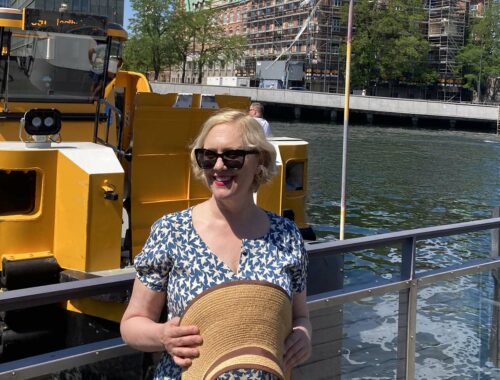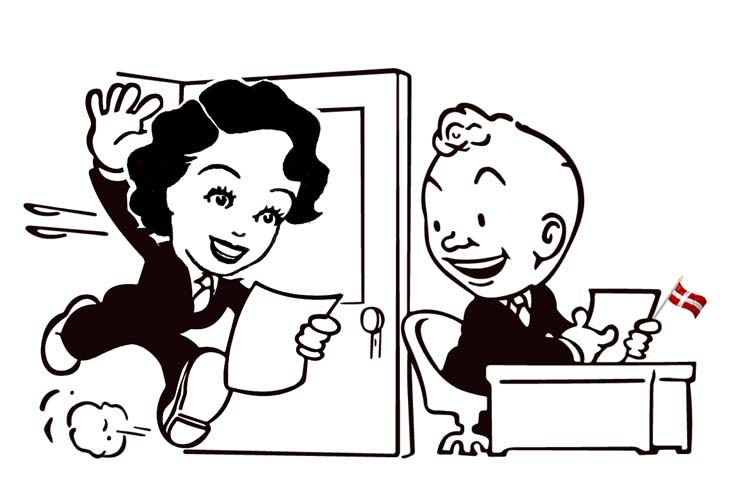Along with food and housing, getting around is a big part of the cost of living in Denmark. In fact, the less you spend on rent, by living outside of the most expensive downtown zones, the more you’re likely to spend on transport.
And no matter what the tourist brochures suggest, you probably won’t go everywhere on a bike in Denmark. Bikes are great in downtown Aarhus or Copenhagen, or in a campus-type area like DTU in Lyngby.
But the further you get outside of urban areas, the more useful a car is. That’s why there are 2.5 million personal cars on the road in Denmark plus 0.5 million “business cars.” Three million cards on the road means roughly one for every two people.
Cars are brutally expensive in Denmark, and if you live far away from mass transport, you might be stuck buying one.
Otherwise, there are many ways to lower your cost of transport in Denmark by getting around for less, and it has a lot to do with how well you plan.
And the Danes are, in general, very good advance planners.
Incredibly cheap train tickets
My personal favorite way to cut the cost of transport in Denmark are the Orange train tickets you can get for incredibly cheap prices if you book in advance.
I was stunned to find that you can get from one side of Denmark to the other – from Copenhagen to Esbjerg, to be precise – for only 99 kroner.
That’s cheaper than a 10-minute trip in a Copenhagen taxi. And it’s 3 1/2 hour journey.
The key is, there’s only so many of these tickets per train, so you need to book them in advance. Otherwise, you could find yourself paying full fare – which is four times as much – to sit in the same seat on the same train.
(If you forget to buy an Orange ticket far enough in advance, the Flix Bus is another option, although it doesn’t go everywhere.)
Four times as much for the same seat
Advance planning is also key to saving money on local trains and busses.
Denmark’s plastic Rejsekort (travel card) has been widely criticized in part because in addition to checking in, you need to remember to check out when your journey is complete. With your mind on where you are going and what you are doing and not leaving your gloves or phone or your groceries behind, this is trickier than it sounds.
I avoided getting a Rejsekort for years, in part because I am exactly the kind of person who forgets to check out.
Use Rejsekort all over Denmark
But now I have one, and I’ve learned that it cuts the price of local journey drastically. A ticket from Copenhagen to Hillerød using the vending machine or the app is 84 kroner; it’s 49 kroner with the Rejsekort. So it’s a pretty big savings.
The Rejsekort is nice because you can use it pretty much all over Denmark. Recently I was in Aarhus and wanted to go out to Ebeltoft, which is a cute tourist town on the coast.
Just clicked my Rejsekort on the rural bus, payment made. No messing around with paper tickets or apps or anything else. Plus you save money.
And, if you do forget to check out, there’s an app you can use. You can check out on the app. I use it a lot.
Carrying big items
Sometimes you want to carry something big – furniture, for example – and a vehicle is the best way to do it.
Advance planning helps here, too – sign up for one of the car-sharing services, like Let’s Go, Share Now, or Green Mobility. You can pay by the hour, or book a whole day if you want to get out of town. Once you set up an account, they constantly send you special deals, so you can get your driving pleasure at a lower price.
You can also rent a cargo bike or Christiania bike to carry your bigger purchases – some Danish libraries offer them for checkout.
Or you can put your purchase in the back of a taxi, which is also cheaper if you book it in advance with your local taxi company’s app. Many apps give you a fixed price for your trip, which reduces any incentive for the driver to take you along the scenic route.
If you’re interested in traveling in someone else’s car, the GoMore app puts together private car owners with spare seats in their car, or a willingness to rent their car out to others.
The cost of bike maintenance
Of course, the cheapest form of transport of all is walking, followed by biking. Both walking and biking are also good exercise, unless you have one of the trendy new electric bikes that keep zooming past me in the bicycle lanes.
But don’t forget the cost of bike maintenance.
If you’ve got mechanical skills, I admire you, because I do not have those skills. That’s why when my family buys bikes, we always buy them from a shop that offers free lifetime tune-ups as part of the purchase price. (A franchise like FriBikeShop will allow you to get those tune-ups at their shops anywhere in Denmark.)
Using your bike for daily transport, you’re going to need a tune-up at least twice a year – brakes tightened, chain oiled, tires checked. That’ll cost you 200 to 400 kroner every time, plus the replacement of any parts – so factor that in to the price of biking.
And include the cost of locks and theft.
Ugly bike
Bike theft is extremely common in Denmark, so that some people actually have two bikes, or more.
They might have a racing bike, for long weekend tours; a shopper bike, with a big basket for groceries; and an ugly bike, which can be left at a train station or some other place bikes are frequently stolen. I have one of these, a beaten up old bike nobody’s interested in stealing.
Some train stations have a special locked room for bike parking, so that’s an option too – as long as the bike thieves don’t have access to the same room.
Bike transport combo
It’s very common to save time and cut the cost of transport in Denmark by combining your bike journey with some other form of transport.
For example, you can usually call a taxi and put your bike on the back. It costs a little extra, but it works well if you’re caught in a Danish rainstorm, have ridden a bit too far to get yourself back again, or had a bit too much to drink.
You can also take your bike with you on most trains, metros, and light rail cars – even on some commuter ferry boats. Just bike to the stop, get on, take your trip, and bike away at the other end.
But make sure to double-check whether or not you need a separate bike ticket. Some forms of transport require them (like the Copenhagen Metro), while others do not (the Copenhagen S-trains.)
Roving ticket checkers
If you need a bike ticket and don’t have one, you will be fined 750 kroner by the roving ticket-checkers.
Everybody gets caught by the ticket-checkers at some point, and no, the confused foreigner act does not work, and neither does crying.
Double and triple check your ticket before you get on a bus or train, because if you don’t have precisely the right one, all your efforts to cut your cost of transport in Denmark will be in vain.
.
© Kay Xander Mellish 2021
Also in this series:
Saving money on food in Denmark
.
.
.






